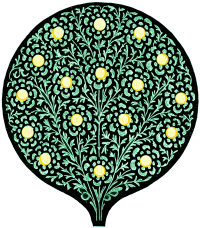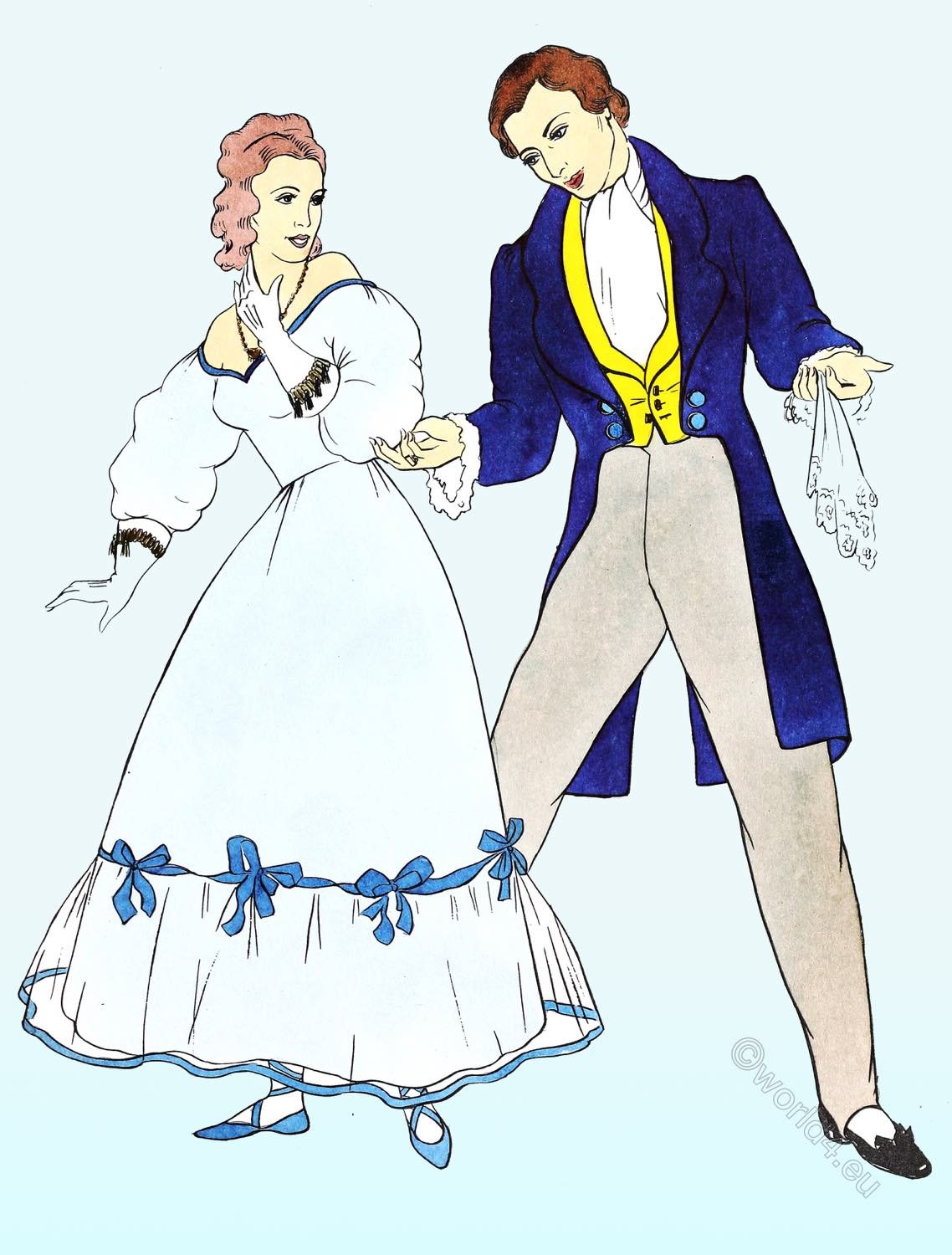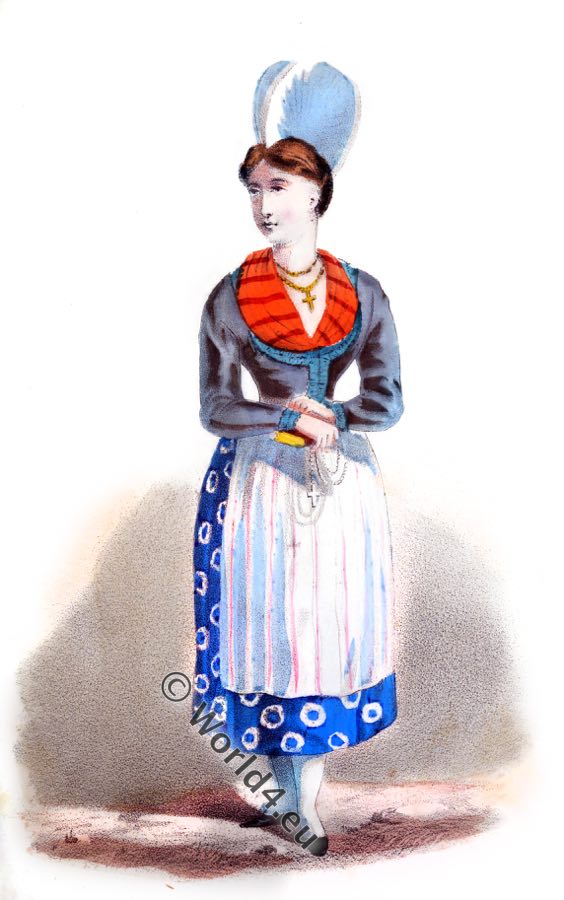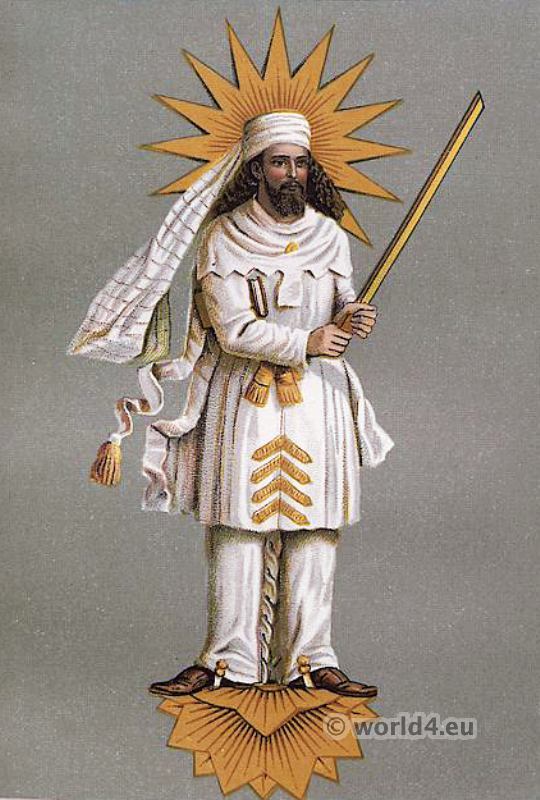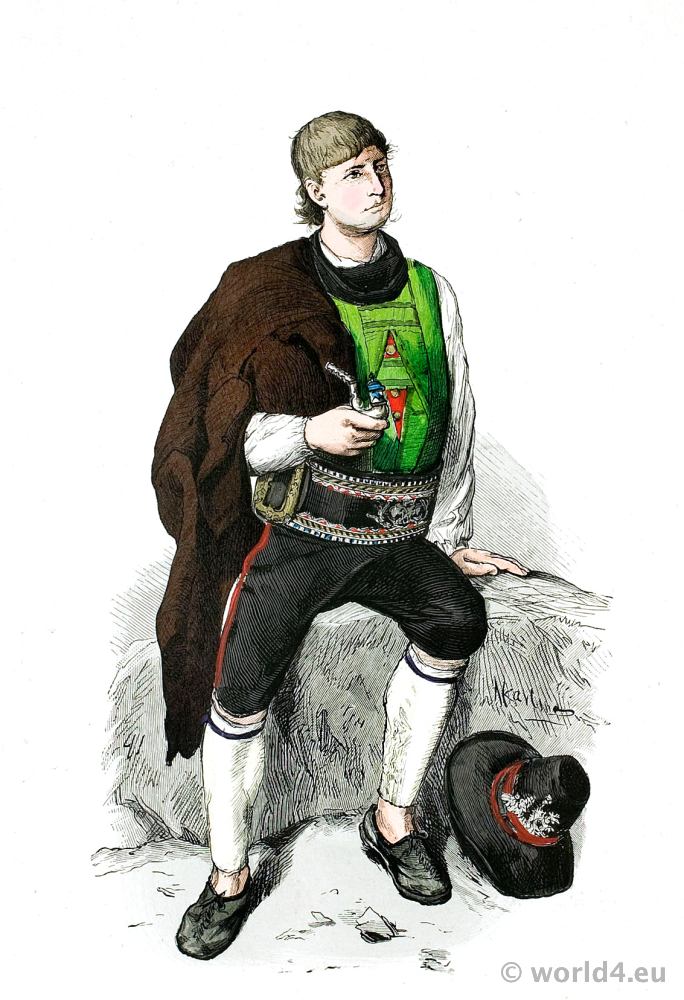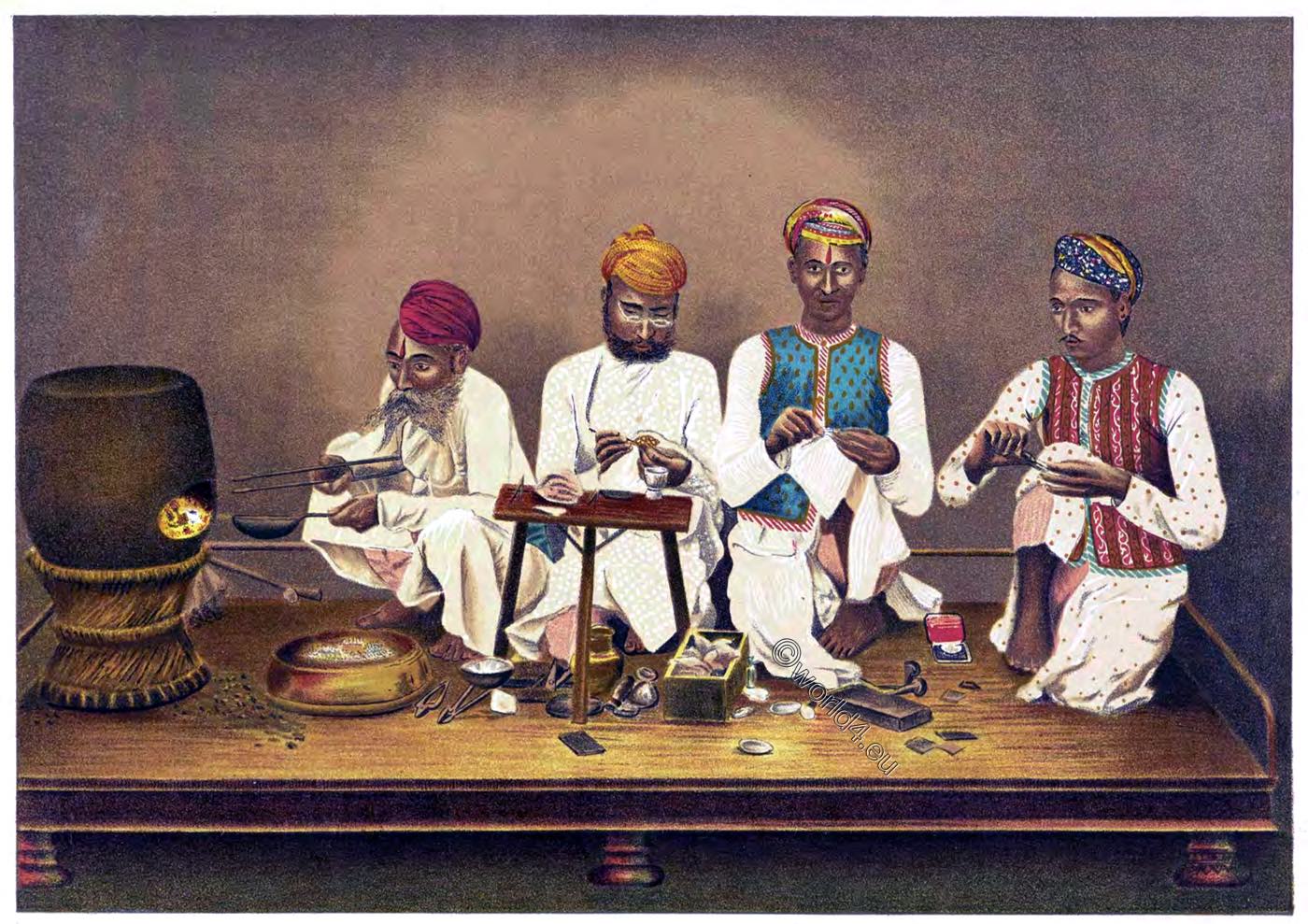Enclosed is a book designed to make service in the British colony of India appealing to the British at home in England. The morning routine in an English household in India is shown on three panels, while a further three panels depict the local environment.
PLATE I.
THE YOUNG CIVILIAN’S TOILET
by William Tayler.
The Gentleman has just come out of his bath, and is sitting in luxurious déshabille in his easy chair.
The morning is warm,—as Indian mornings sometimes are. He has a feather fan in his hand; and, in addition to the large Punkah over his head, a hand-Punkah is being waived by the boy at his side.
In the right-hand corner stands a Petarah; the racquette, saddle, boots, and gun-case, shew that our hero is a sportsman; and Messrs. Pittar and Lattey’s bill for jewel which is seen on the floor, affords some ground for speculation as to his matrimonial intentions.
The stout little man brushing his hair is the Sirdar-bearer, *) whose office and authority are marked by the bunch of keys in his Cumur-band. The Mate-bearer (Sirdar’s asistant) is washing his master’s feet in a Chillumchee, while a third bearer is holding a looking glass; an earthen Suraee is on the floor, which is covered with a Chutaee.
The venerable old man with a white beard, who is bringing in a cup of coffee, is the Khansaman (a butler). A portrait of the young lady, and a favorite Arab, adorn the wall.
*) A bend servant, vested with the general superintendence of the domestic concerns, and with the special charge of his master’s wardrobe.
Source: Sketches illustrating the manners & customs of the Indians & Anglo Indians: drawn on stone from the original drawings from life / by William Tayler (1807-1892) Esq. Bengal Civil Service. Thomas McLean, Simpson Library, Museums of History NSW, 1842.
Discover more from World4 Costume Culture History
Subscribe to get the latest posts sent to your email.


